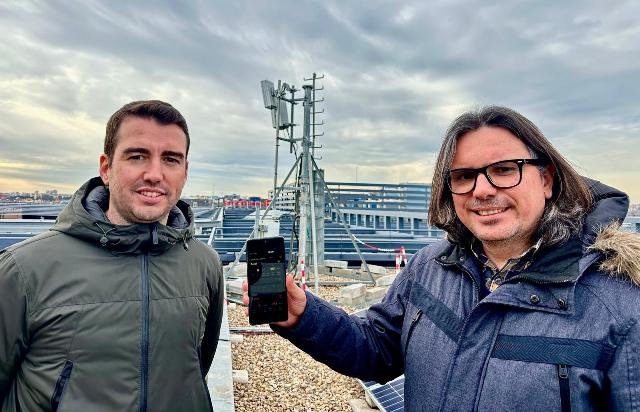Vodafone, Xiaomi, and Qualcomm Technologies have tested a 5G technology set to revolutionize customer experiences with faster upload speeds and expanded coverage. The test paves the way for the launch of new smartphones and devices anticipated in 2024.
 Conducting the first-ever European technical trial of this 5G uplink technology, Vodafone, Xiaomi, and Qualcomm achieved remarkable peak upload speeds of up to 273 megabits-per-second (Mbps). This is a substantial improvement over the current average upload speed of 100 Mbps offered by most smartphones and home broadband services. The enhanced 5G technology not only elevates upload speeds closer to download levels but also extends coverage and increases overall capacity.
Conducting the first-ever European technical trial of this 5G uplink technology, Vodafone, Xiaomi, and Qualcomm achieved remarkable peak upload speeds of up to 273 megabits-per-second (Mbps). This is a substantial improvement over the current average upload speed of 100 Mbps offered by most smartphones and home broadband services. The enhanced 5G technology not only elevates upload speeds closer to download levels but also extends coverage and increases overall capacity.
The test used the capabilities of Vodafone’s innovative 5G Standalone (5G SA) networks in Germany and Spain, Qualcomm’s latest silicon technology (The Snapdragon 8 Gen 3 Mobile Platform), and Xiaomi’s forthcoming flagship smartphone.
The improved uplink capabilities are set to empower users to upload photos, videos, and files to social media platforms and the cloud at nearly double the speed achievable today. This advancement responds to the growing demand for cloud storage, video streaming, augmented and virtual reality applications, and multiplayer gaming.
Alberto Ripepi, Chief Network Officer of Vodafone, expressed the company’s commitment to ensuring customers are among the first worldwide to benefit from this groundbreaking 5G feature. Ripepi highlighted the collaboration with key partners to lead the industry in testing and implementing the necessary network, silicon chips, and devices.
The technological breakthrough hinges on the advanced capabilities of 5G SA, specifically utilizing Uplink Carrier Aggregation with Tx Switching. This technique combines multiple transmission channels supported by smartphones and mobile antennas, significantly enhancing uplink performance.
Vodafone stands out by pioneering the rollout of 5G SA, distinguishing itself from other telecom companies that rely partially on 4G technology for their 5G services. The company has commercially launched 5G SA in Germany and the UK, with ongoing pilots in additional markets. Vodafone plans to progressively update sites to support Uplink Carrier Aggregation with Tx Switching as new devices become available.
Enrico Salvatori, Senior Vice President and President, Qualcomm Europe/MEA of Qualcomm Europe, Inc., emphasized the significance of achieving another 5G milestone and the evolution toward 5G Standalone. Qualcomm, Vodafone, and Xiaomi’s collaboration represents a crucial step in realizing the full potential of 5G Advanced.
Andi Zhang, Deputy General Manager of Product & Technology at Xiaomi, expressed the company’s commitment to innovation in 5G and access technologies. Zhang highlighted the successful pilot test of UL Tx switching and its impact on resource utilization and uplink performance enhancement.
The test in Germany and Spain showcased the efficacy of Uplink Carrier Aggregation with Tx Switching. In today’s smartphones, one or two channels are dedicated to uplink, offering approximately 100Mbps depending on the user’s location. By employing the tested technology, Vodafone and its partners optimized transmission, achieving a speed boost ranging from 35 percent to 54 percent, depending on the distance between the smartphone and the mobile site.
The successful tests occurred in Ciudad Real, Spain, using Vodafone’s live multi-vendor testing 5G network named ‘CREATE’ (Ciudad Real España Advanced Testing Environment), and Vodafone’s commercial 5G SA network in Hannover, Germany.
The uplink boost represents Vodafone’s latest 5G innovation, complementing successful tests of 6GHz spectrum for future capacity enhancement and new software designed for low-powered devices. These innovations cater to smartwatches, credit card readers, and portable routers without compromising battery life.
